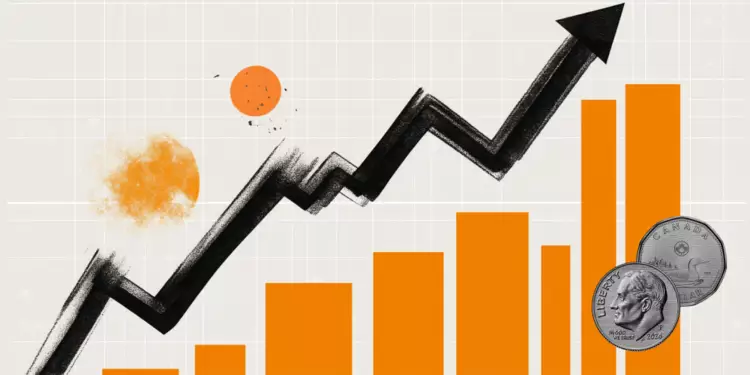Recent movements in the USD/CAD exchange rate have highlighted a significant shift in economic dynamics, especially amid ongoing geopolitical tensions. The currency pair has shown resilience, bouncing back to around 1.4105 during the early Asian session on Thursday. This rebound is largely credited to U.S. President Donald Trump’s unexpected announcement of a 90-day postponement on imposing higher tariffs on American trading partners. Such actions indicate a cautious approach towards international trade, reflecting the complexities that today’s financial markets are grappling with. Analysts are adjusting their expectations as they anticipate a pivot in trade negotiations that could reshape financial outlooks across borders.
The Tariff Pause: A Temporary Relief
Trump’s declaration for a temporary halt on additional tariffs has been received as a move aimed not only at placating trading partners but also as a strategic buffer to stabilize volatile market sentiments. Market analysts, like Mark Hackett from Nationwide, view this pause as a reinforcement of productive negotiations, a necessary development in a climate draped in uncertainty. The brief respite from potential tariff escalations injects a level of predictability which traders greatly appreciate, especially against a backdrop of rising inflation concerns. Consequently, the U.S. dollar strengthened marginally against the Canadian dollar as investors interpreted this as a sign of optimism towards U.S. economic resilience.
Data Dependency: The Influence of CPI Reports
While the tariff postponement has given a lift to the USD, the focus in the coming hours will turn towards the awaited Consumer Price Index (CPI) report for March. With forecasts suggesting a year-over-year increase of 2.6% in headline CPI and a core CPI uptick of 3.0%, all eyes are set on how these figures will influence monetary policy decisions by the Federal Reserve. Inflation data has historically served as a critical barometer for central banks regarding interest rate adjustments. In the current context, the slight inflationary pressures could propel discussions around the timing of potential interest rate adjustments, influencing both the dollar’s strength and the trajectory of the Canadian dollar as traders recalibrate their positions.
The Oil Factor: Canada’s Economic Backbone
Canada’s economic health is intricately tied to oil prices; as the largest exporter of oil to the U.S., fluctuations in crude oil prices resonate directly with the strength of the Canadian dollar. A resurgence in oil prices could bolster the Canadian dollar’s value, making the commodity-linked currency a significant player in U.S.-Canada trade competitiveness. The correlations between oil prices and the Canadian dollar suggest that any recovery in global oil markets could quickly lead to a strengthened CAD. Given that higher oil prices also contribute to an improved trade balance – a vital economic health indicator – investors will remain vigilant as they monitor oil market fluctuations.
Market Sentiment: The Role of Risk Appetite
The undercurrents of market sentiment cannot be overlooked when analyzing CAD movements. Investor behavior oscillates between risk-on and risk-off conditions, each of which has profound influences on currency values. A risk-on environment, characterized by increased appetite for higher-risk assets, tends to favor the Canadian dollar, infusing cash flow into its markets. Conversely, as traders gravitate towards safe-haven currencies during periods of instability, the CAD often suffers. Thus, the interplay between investor sentiment and broader macroeconomic conditions constitutes a crucial layer affecting the dollar’s performance against its Canadian counterpart.
Interest Rates: The Central Bank’s Balancing Act
The Bank of Canada (BoC) holds the reins over monetary policy, utilizing interest rate adjustments to achieve economic equilibrium. With a stated goal of maintaining inflation within the 1-3% range, the BoC’s decisions directly impact the attractiveness and value of the Canadian dollar. Historically, higher interest rates have drawn foreign investment, which inevitably leads to appreciation of the CAD as demand for the currency increases. As the BoC evaluates the economic data and market reactions stemming from U.S. fiscal policies, the pressure mounts on it to adapt its strategies accordingly, striving for a balance that encompasses both domestic growth and external trade relationships.
Macroeconomic Indicators: The Pulse of the Economy
Broader economic indicators play pivotal roles in shaping expectations for the Canadian dollar. Metrics such as Gross Domestic Product (GDP), manufacturing and service PMIs, and employment statistics serve as vital signals of economic health. A robust performance in these areas fortifies investor confidence, subsequently leading to increased demand for the CAD. However, a downturn evidenced by weak data could just as swiftly dissuade investors and spur a depreciation. Thus, the dual-edged nature of economic reports emphasizes the need for stakeholders to stay acutely aware of emerging trends that may dictate the currency’s trajectory moving forward.
In this dynamic context, the USD/CAD pair mirrors the complex intertwining of global trade, market psychology, and national policies, setting a stage rich with implications for traders and economists alike.

